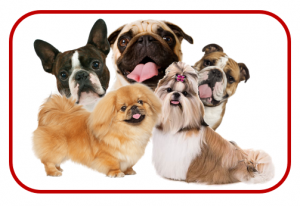In last month’s blog, we reignited a chat dedicated to helping your dog beat the heat. If you haven’t yet, check it out here. Once you’re all caught up, you’re ready to deep dive into the different factors that may put your dog at high risk for heat sensitivity.

For a variety of reasons, avoiding the outdoors during the summertime just doesn’t make sense as a dog owner. For one, you may have a dog who thrives in the heat and after being cautious all winter, now is their time to shine. Another reason could be you own a breed that needs to get outside and run around to even begin releasing that pent-up energy. Or maybe your dog just likes being outside. Regardless of the reason, it’s important to consider how your dog responds to the sun, heat, and humidity to safeguard them from the perils of summer. Heat sensitivity is a moving scale and can really only be summed up into three words: know your dog. That being said, there are some sweeping generalizations that will help you first, recognize if your dog is high risk, and second, understand why or why not. Both will help guide you as to what to look out for and how to switch things up for the better.
Long fur flows in the breeze; Dark fur is brilliantly shiny. Heat sensitivity doesn’t care.
Some people cut their hair in the summer and there’s a reason we’re allowed to wear white up until Labor Day: your head gets hot and black clothes get STEAMY. These principles apply to dogs as well, except it’s not just their head, it’s their entire body, and they don’t get to just change their fur. While keeping your pet’s fur well-groomed does help immensely, there’s no denying that long-haired breeds are at higher risk for heat sensitivity simply due to their fur acting as a giant blanket. And dark fur? Well, dark colors attract heat and cause these pooches to go from cool to hot very quickly. If your dog falls into either of these categories (or worse, both) and begs for long walks, here’s where changing up your routine will come in handy. Try walks at dusk or dawn. Basically, when the sun is away, you and your dog can come out and play.
Smushy faces: cute for cuddles, not the heat.
I may be showing a slight bias by calling smushy faces cute, but it is 100% fact that brachycephalic breeds are more at risk in hot weather. I know, I know: I lost you at brachycephalic.

This lovely SAT word simply refers to those broad, short heads we all love on breeds like bulldogs and pugs. Unfortunately, while cute, this physiology makes it harder for them to intake air into and circulate through their bodies. This becomes an issue in the heat because dogs don’t sweat, they pant. Panting is supposed to circulate cool air, but brachycephalic breeds can’t do that as efficiently. As the heat and humidity rise, it’s important you limit time outside with these breeds and provide as many cooling techniques, like cool water and shade, as possible when you do venture outdoors.
Something old. Something new.
No, I’m not talking about weddings! Puppies and puppies at heart can be at great danger in the heat.
Senior citizenship in the dog world begins as early as age 5 (for those huge breeds like the “gentle giant” Great Danes) and 7 (for the smaller to mid-sized breeds). With older age often come different illnesses, some of which can affect our dog’s heart and/or breathing (remember those brachycephalics?). When it’s hot, pay attention to your dog’s behavior. If something seems off, it likely is. Don’t wait until it’s obvious, just go inside and let that older pup have a lazy day and then find some other creative ways to release their energy indoors, where the AC lives.
Unlike with older dogs, a puppy owner hasn’t quite had the chance to get to know their dog and its particular body language very well. What you can and should know is that your puppy doesn’t know their body that well either, which means they haven’t quite mastered that self-regulation like simply

slowing down or panting until it’s too late. And all that puppy energy can easily lead to overexertion without even trying. 2+2 always equals 4; poor self-regulation and overexertion in the hot sun can, and will, end badly if you don’t step in. Your puppy looks to you to watch out for their safety when having fun in the sun, so why not experiment while you both figure it out! Do they like to play in the hose or take a dip in the kiddie pool? Or would they rather lie in the shade gobbling down yummy beat-the-heat treats, like pupsicles and ice cream? These activities not only make for great photo ops, they keep your pup safe and cool.
Obesity slows you down.
And makes a dog more prone to heat sensitivity. Dogs that are overweight have more fat cells in their bodies, which (much like having long fur) acts as insulation and packs on the heat. Not only that, but obese dogs also generate more heat (than healthier or more active dogs) when exercising, even at its mildest form. So that

quick potty break and stroll around the block you always take? Add in summer’s rays and you may as well have gone on an excursion through the desert. Aside from the need to get your dog’s weight down to a healthy range, taking precautionary steps (such as providing lots of water, rest, and shade) will prove a necessity when the days heat up.
Let’s face it y’all: the dog days of summer are real, and quickly creeping into the DMV area. COVID-19 and #STAYHOME have got us canine caretakers going out for 5,900,233 walks around the block every day, but as hellish humidity rears its ugly head, keep these generalizations in mind. But remember: No two long-haired or smushy-faced dogs are the same; they all respond differently to the heat and it’s up to you to watch and learn. And, as always, better safe than sorry!




Leave a Reply